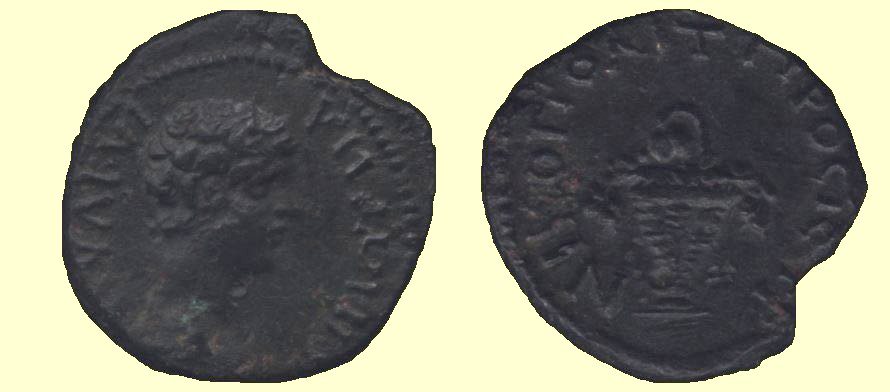
Caracalla 211 - 217 A.D.

Caracalla 211 - 217 A.D.
| Coin Description | Caracalla, AE 16mm, Grade ??, The obverse of the coin is struck slightly off-centre, Moushmov (online) #1109 Nikopolis ad Istrum reverse is on plate IX #13. |
| Obverse | The portrait is Caracalla a bare headed bust facing right.
The legend reads M AV KAI ANT |
| Reverse | The reverse shows a basket overflowing with fruits
and grapes hanging over the side which is a symbol of fertility and prosperity.
The legend reads NIKO |
| Mint | Nikopolis ad Istrum |
| The Entire Story | The coin shows Caracalla as Caesar with on the reverse the
prosperity of the city of Nikopolis ad Istrum which is imho a sign of them
showing that they are happy with him as their future Augustus (whether they
meant it or not |
Nikopolis ad Istrum was a Roman town established by the emperor Trajanus after the victory over the Dacis tribe (Nikopolis means city of victory). It enjoyed its vigorous growth under the reign of the emperors Constantine the Great and Justinian I. Archaeological excavations uncovered the fortified walls, main streets, many public buildings and dwellings of common people, thermaes etc.